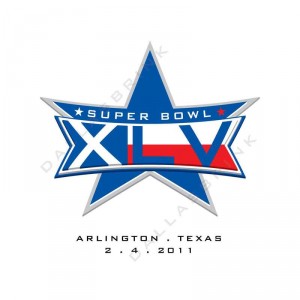 Every year, the hype over Super Bowl ads is almost as big, if not bigger, than the hype over the actual game. And in both cases, some years have delivered better than others. This year was not one of the good ones all the way around. [For those actually interested in football, the Green Bay Packers edged out the Pittsburgh Steelers 31 to 25.)
Every year, the hype over Super Bowl ads is almost as big, if not bigger, than the hype over the actual game. And in both cases, some years have delivered better than others. This year was not one of the good ones all the way around. [For those actually interested in football, the Green Bay Packers edged out the Pittsburgh Steelers 31 to 25.)
As for the commercials, if it wasn’t the huge number of automobile ads and movie trailers that made it hard to remember which car or movie was being pitched, then it was the ads that managed to offend groups ranging from Tibetans, Italians and senior citizens to women, parents and people opposed to drivers using Facebook while behind the wheel. There were, of course, exceptions, with some commentators offering positive reviews of ads for Volkswagen (with its mini Darth Vader), Motorola (love, flowers and Big Brother), Pepsi (love in a can), Chrysler (love note to Detroit), Best Buy (a space-age Justin Bieber), E*Trade (talking babies) and CarMax (mermaids and geeks), among others. The ads, good or bad, cost advertisers between $2.5 million to $3 million for a 30-second spot, according to news reports.
KnowledgeToday asked Wharton marketing professor David Reibstein to give us his views of this year’s Super Bowl ad tournament.
”Rating the best ads for the Super Bowl always depends on what criteria are being used,” says Reibstein. “Most of the popular ratings are based on how much enjoyment people got by watching the ad. It is not necessarily the best-producing ad for the firm. In fact, often, it is quite the opposite. Yet, many of the ad agencies that produce these ads are striving to get attention and to demonstrate their creativity and production capabilities while paying less attention to whether the ads will yield the desired results for the firm.”
Below, in his own words, are Reibstein’s favorite Super Bowl XLV ads (in no particular order):
- The Bridgestone ad with the beaver — has an animal, which helps … and it clearly states a product benefit.
- Pepsi Max had several ads, but the best was “Love Hurts”. It is very cute and communicates the product benefits. I also liked the one with the date where we could hear what each of them were thinking.
- CarMax was unusual and not a well known brand, but you got the [message] that they were all about service like in the “good old days.”
- The Coke ad with the border crossing illustrated we can let issues between us go away for a Coke.
- The NFL ad showing all the old TV programs with football in them [illustrates] how pervasive the sport is in all parts of our life — with programs from different eras and for different audiences. The nostalgia was great and undoubtedly held attention.
My least favorite ads were those that focused on the production, often sci-fi, to demonstrate [technical] capability but had little information about the product. Several ads fit into this category.
- One that I thought was hilarious, but sent the wrong message, was the Dorito ad with the dog running into the door. It showed that Doritos are a big draw for dogs and would make a great dog treat. Wrong message, yet I am sure it will get high ratings.
- The VW ad with the powerful Darth Vader was cute, but says absolutely nothing about the car.
- The Coke ad was too much sci-fi and got distracted by the production.
As for the wisdom of companies spending $3 million for a single 30-second ad, Reibstein notes that it is a question of “simple logic:” Approximately 100 million viewers are watching these ads, he says, which is “just under $30 on a cost per thousand (CPM) basis. That’s in the ballpark for what you pay for a normal ad, plus all these ads get re-shown on so many different websites and in so many newspapers that the total amount of exposure is much greater. So while it looks like an outrageously expensive process, it’s probably a pretty good bargain.”
The $2.4 Million Dollar Question: What Is the ROI for Super Bowl Ads? Knowledge at Wharton



